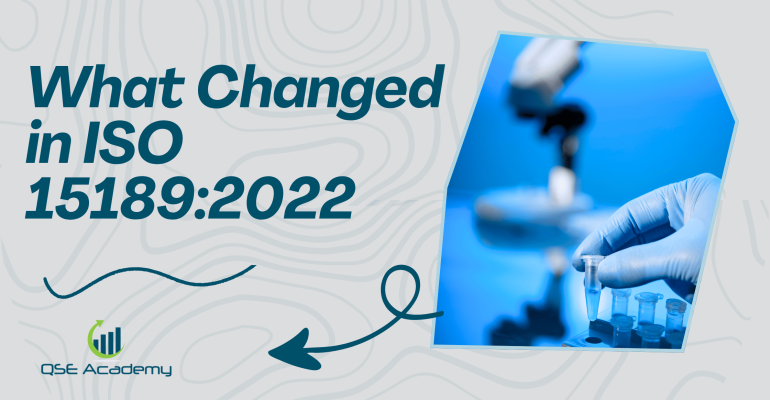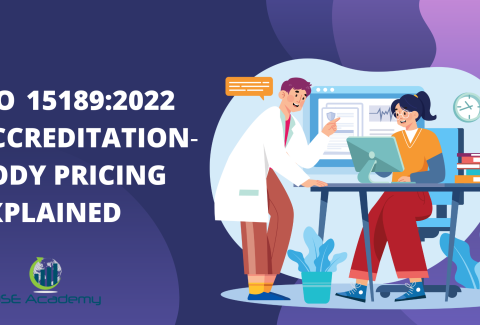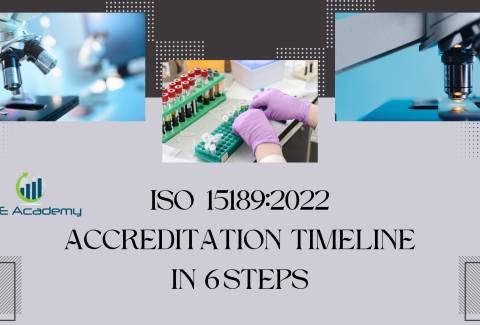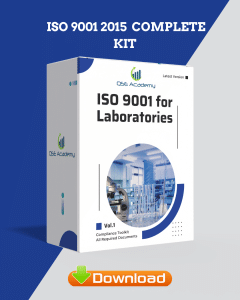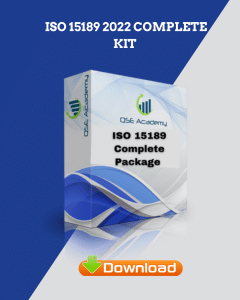What Changed in ISO 15189:2022
Last Updated on October 22, 2025 by Hafsa J.
What Changed in ISO 15189:2022
Let’s be real—when ISO updates a standard, most labs feel a mix of curiosity and panic. I get it. In my experience working with over forty medical and clinical labs worldwide, the moment a new version drops, the first question I hear is, “Do we have to start everything from scratch?”
Thankfully, no. But you do need to understand what’s changed—and fast—especially if you want to stay compliant and avoid surprises during your next accreditation audit.
Here’s the deal: ISO 15189:2022 isn’t just a cosmetic update. It reshapes how laboratories think about risk, data, leadership, and even point-of-care testing. In this post, I’ll walk you through exactly what’s different, what it means for your lab, and how to make the transition without tearing your hair out.
By the time you’re done reading, you’ll know where to focus your energy, what updates to prioritize, and how to confidently prepare your quality management system for this new era of lab accreditation.
Ready? Let’s dive in.
Why ISO 15189 Was Updated in 2022
Here’s what I’ve noticed over the years—standards like ISO 15189 don’t just get revised for fun. There’s usually a pretty serious reason behind it. And this time? It was long overdue.
The last major revision was back in 2012. That’s a whole decade ago. Since then, the way labs operate has changed dramatically. We’re talking about advances in lab automation, new types of testing (hello, point-of-care!), and of course, the massive global wake-up call from the COVID-19 pandemic.
In my experience, the biggest push came from the need to harmonize ISO 15189 with newer standards like ISO/IEC 17025:2017 and ISO 9001:2015. A lot of labs use more than one standard, and having different structures and terms just made life harder than it needed to be. This revision fixes that.
But it’s not just about syncing up with other standards. It’s also about pushing labs to think beyond compliance—to actively manage risk, continually improve, and keep up with the demands of digital data and patient care.
So, if your lab’s still running off a checklist from 2012, this is your cue to re-evaluate.
Pro Tip: When reviewing the new standard, look for recurring themes like risk-based thinking and evidence of continual improvement. These aren’t just buzzwords—they’re the backbone of the 2022 update.
Structural Overhaul: From Clause Format to Annex-Based Guidance
Now, let’s talk structure—because if you’ve cracked open the new ISO 15189:2022, you probably noticed it feels… different. And you’re not imagining it.
Gone are the days of the rigid, old-school clause format. The 2022 version gives us something more aligned, more readable, and—dare I say it—more practical. Think of it as cleaning out a cluttered lab drawer. Everything’s still there, but now it’s grouped in a way that actually makes sense when you’re trying to find what you need.
So why the change? Well, this update brings ISO 15189 in line with the structure of ISO/IEC 17025:2017, which many testing and calibration labs already use. That means labs working under both standards can finally stop juggling two completely different systems just to stay accredited.
And here’s the real game-changer: the new Annexes. These aren’t just tacked on for fun—they actually offer real guidance for implementing the standard in day-to-day lab operations. One of my clients, a mid-sized diagnostic lab, used Annex C to restructure their document control system. It cut down their internal audit findings by over half in just six months.
Pro Tip: Don’t ignore the annexes. They’re packed with real-world context and practical interpretation that can make your implementation smoother—and your next audit less stressful.
Bottom line? The structure’s changed to help you—not to confuse you. So take advantage of it.
Increased Focus on Risk Management and Continual Improvement
Alright, let’s get straight to it—risk-based thinking is no longer optional. In ISO 15189:2022, it’s baked into just about everything. And if you’re still treating risk as a once-a-year brainstorming session during management review… well, that’s going to be a problem.
In my experience, the labs that thrive under the new standard are the ones that integrate risk awareness into every stage of their workflow—from sample handling to equipment maintenance to reporting. It’s not about paranoia. It’s about being proactive.
Let me give you a quick example. One of the labs I worked with started using a simple FMEA (Failure Modes and Effects Analysis) sheet to assess their pre-analytical process. They uncovered a risk they’d completely overlooked: mislabeled samples during night shifts. Once they addressed it, their sample rejection rate dropped by nearly 40%. That’s the kind of impact ISO’s new emphasis on risk can have.
But it’s not just risk. Continual improvement is now right up there with accuracy and reliability. The standard wants to see real, measurable efforts—internal audit findings that lead to actual changes, customer feedback that drives action, not just a checkbox.
Pro Tip: Keep a “small wins” log. Seriously. Track the little process tweaks your team makes each month. It shows auditors that improvement isn’t just a buzzword—it’s part of your lab’s culture.
And here’s the kicker: if you build this mindset into your QMS, not only do you stay compliant—you become more efficient, more competitive, and a whole lot more audit-ready.
More Emphasis on Information Management and Data Integrity
Let’s be honest—lab data isn’t just important, it’s everything. And ISO 15189:2022 makes that crystal clear. One of the biggest shifts in this update is how seriously it treats information management and data integrity. If your lab still has manual workarounds or unvalidated software, this part should have your full attention.
What’s changed? Well, now there’s specific guidance on everything from electronic recordkeeping to LIS (Laboratory Information System) validation and even cybersecurity protocols. The standard’s basically telling labs, “Your data processes need to be as tight as your testing procedures.”
In my experience, this is where a lot of labs stumble—not because they don’t care, but because they assume IT is handling it. But ISO wants your lab team to own this. You need clear procedures for things like data access, version control, audit trails, and backup integrity.
Here’s a real-world story: I worked with a genetics lab that had top-notch instruments but hadn’t validated their LIS. During an internal audit, they realized their auto-generated reports could be edited manually—without leaving a trace. That’s a huge red flag under the new standard. We helped them set up role-based access and audit logs, and they passed their reaccreditation without a single finding in that area.
This is important because trust in your lab results starts with confidence in your data. If your systems aren’t secure or traceable, everything else you do is on shaky ground.
Pro Tip: Make sure your team understands how to spot data issues—not just your IT department. A simple checklist for system checks, backups, and log reviews goes a long way in building daily habits that protect your compliance.
Stronger Requirements for Laboratory Leadership and Personnel Competence
If there’s one thing ISO 15189:2022 makes loud and clear, it’s this—leadership can’t sit on the sidelines anymore. Top management isn’t just there to sign off on documents or show up for audits. The new standard wants them involved, visible, and accountable.
I’ve seen this shift play out firsthand. In the past, some lab directors would delegate everything to the quality manager and hope for the best. But now? That approach won’t fly. ISO expects leadership to be actively engaged in setting quality objectives, reviewing performance, and promoting a culture of continual improvement.
And it doesn’t stop at leadership. There’s also a sharper focus on personnel competence. That means labs need to go beyond checking boxes on training forms. You have to prove that your people are not only trained—but actually competent in their roles.
Here’s a great example: I helped a multi-site hospital network update their competency program after struggling with inconsistencies. We introduced role-specific assessments and ongoing peer evaluations, and within a year, their nonconformities related to staff competence dropped to zero. Plus, staff engagement actually went up because people felt their skills were being recognized and developed.
This is important because people—not just procedures—are what make a lab reliable. The 2022 update reflects that by holding both management and frontline staff to higher standards.
Pro Tip: Build a living competency matrix. Tie it directly to your job descriptions and quality objectives, and update it regularly. It’ll save you hours during audits and makes your personnel files way more meaningful.
Inclusion of Point-of-Care Testing (POCT)
This one’s big—Point-of-Care Testing (POCT) is officially in. If your lab or healthcare facility does any kind of bedside, outpatient, or mobile testing, ISO 15189:2022 now has something to say about it. And no, it’s not just a vague mention—POCT has been folded into the standard with clear expectations.
In the past, a lot of labs assumed that POCT didn’t fall under ISO 15189 unless they specifically extended their scope. That ambiguity is gone. Now, if your organization performs POCT—even if it’s in an ER, a ward, or through community services—you’re expected to apply the same quality management principles as you would in your central lab.
I’ve worked with several hospital networks where POCT was treated as the “wild west.” Nurses would perform glucose or troponin tests with minimal documentation, and oversight was almost nonexistent. That’s not going to cut it anymore. Under the 2022 update, labs are responsible for ensuring POCT personnel are trained, equipment is calibrated, results are traceable, and procedures are standardized.
One hospital I consulted with created a dedicated POCT oversight team that coordinated with nursing leads. We built a tailored competency program and linked it to their LIS. Not only did they meet ISO’s expectations—they actually improved patient turnaround times because processes were clearer and better managed.
This matters because POCT often directly affects clinical decisions. That means poor quality here isn’t just a paperwork issue—it can impact patient safety.
Pro Tip: Treat POCT like a satellite lab. Assign a responsible person, audit it regularly, and make sure all results feed back into your central quality system. That alignment is exactly what ISO is looking for.
Common Mistakes and FAQs
By now, you might be thinking, “We’ve got this covered.” And maybe you do. But let me share what I’ve seen over and over again—it’s not always the big requirements that trip labs up. It’s the assumptions. Here are a few common missteps I’ve seen in labs navigating ISO 15189:2022.
Common Mistakes to Avoid
Assuming POCT doesn’t apply to you.
If your facility performs bedside or decentralized testing—even occasionally—it falls under your QMS. Skipping it can lead to major nonconformities.
Thinking “data integrity” is just an IT issue.
It’s not. It’s a lab-wide responsibility. If your analysts or admin staff don’t understand how audit trails work or how to recognize altered data, that’s a gap.
Over-relying on outdated SOPs.
I’ve seen labs try to “make do” with 2012-era procedures and just slap new clauses on them. But the 2022 standard changes the spirit of many requirements. It’s not just about renumbering—it’s about rethinking.
Using a one-size-fits-all risk register.
Generic risk assessments might look good on paper, but they rarely hold up during audits. Risk needs to be process-specific, relevant, and regularly reviewed.
Frequently Asked Questions
Q1: Do we need to completely rewrite our QMS?
Not necessarily. But you do need to conduct a structured gap analysis. Identify what still fits, what needs updating, and where you need new documentation or evidence.
Q2: How long is the transition period?
Most accreditation bodies are allowing a transition window of around two years, but don’t wait. Early transition shows maturity and gives you more control over timing.
Q3: Will this cost us more in implementation?
There might be short-term investments—especially around training, POCT oversight, or LIS upgrades. But in the long run, the improved structure and risk management usually pay off in fewer errors, less rework, and smoother audits.
What This Means for Your Lab
So, what’s the big picture here?
ISO 15189:2022 isn’t just a revision—it’s a shift. It pushes labs to think smarter, act proactively, and operate with a higher level of accountability, especially around risk, data, and people. Whether you’re managing a central lab, overseeing POCT programs, or just trying to get your QMS in shape, this update demands a deeper, more connected approach.
We’ve covered the why, the what, and the how—from leadership responsibilities to LIS validation to managing decentralized testing. The key takeaway? Start now. The labs that wait until the last minute to adapt are the ones that struggle during audits. The ones who take this as a chance to improve? They stand out—for all the right reasons.
Whether it’s ISO 9001, ISO 22000, or the cosmetics-focused ISO 22716, I’ve spent my career I’m not here to call myself an expert—I prefer “enthusiast” because I truly love what I do. When I’m not writing about standards, you’ll probably find me playing Piano 🎹, connecting with people, or diving into my next big project💫. I’m an engineer specialized in the food and agricultural industry
make ISO standards less intimidating and more approachable for everyone.
turning complex jargon into clear, actionable steps that businesses can actually use.
There’s something incredibly rewarding about helping people navigate food safety and quality management systems
in a way that feels simple, practical, and even enjoyable.
I have a Master’s in QHSE management and over 12 years of experience as a Quality Manager
I’ve helped more than 15 companies implement ISO 9001, ISO 22000, ISO 22716, GMP, and other standards
My clients include food producers, cosmetics manufacturers, laboratories, and service companies
I believe quality systems should be simple, useful, and efficient.

